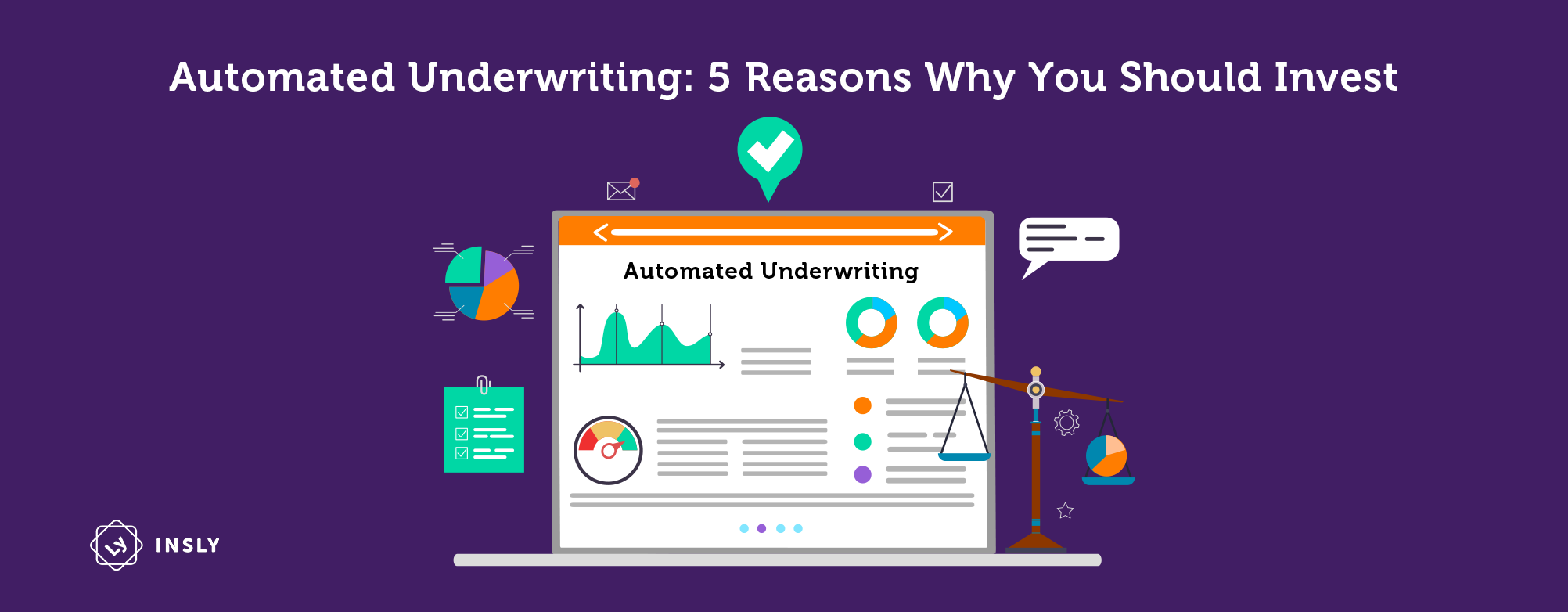Deciding between manual underwriting vs. automated underwriting is a significant challenge for MGAs. But the benefits of introducing an automated underwriting system are now undeniable.
An effective underwriting function is critical to success as an MGA. Accurately deciding whether you can write a policy, and for how much, ensures that you won’t face excessive claims in the future, and will ultimately make a profit from your insurance products. However, this objective must always be balanced with the need to provide a fast, and streamlined customer experience, along with the right cover, at the right price.
Striking this balance has led an increasing number of MGAs to introduce automated underwriting into their workflow, to remove much of the manual work from the process. Underwriters are highly skilled and knowledgeable professionals, but they are often bogged down by legacy systems, sifting through documents, and reviewing increasing volumes of data. Automated underwriting leverages the power of technologies such as artificial intelligence (AI), robotic process automation (RPA), and application programming interfaces (APIs) to take on much of this heavy lifting.
So, if your MGA doesn’t have an automated underwriting system, and you’re wondering about manual underwriting vs automated underwriting, consider these 5 benefits:
1. Free your underwriters!
Many underwriters are still involved in a high quantity of repetitive and low value tasks, such as data entry, sifting through documents, and combining data sets. By digitising these time-consuming processes, and introducing automated underwriting approval for straightforward quotes, you can free them up to spend time on more specialist and complex policies, as well as strategic tasks such as developing new product lines – with the potential to deliver much greater value to the business.
2. Enhanced customer experience
We live in the digital age and customers have high expectations. They don’t want to spend time filling in forms or talking on the phone to find the insurance they need. The more this process can be streamlined and automated the better. When simple policies can be approved through automated underwriting, it means faster decisions and happier, more loyal customers. And for those with more complex needs, underwriters have the bandwidth to handle their applications promptly.
3. More accurate and consistent quotes
But speed isn’t the only factor to think about, and automated underwriting can also help to ensure accuracy, consistency, and reduce the chance of errors in underwriting decisions. This is particularly the case now that automated systems can draw on wider range of data, both from internal and external sources. With the help of APIs, MGAs can analyse data from organisations such as Companies House, or the DVLA, as well as behavioural analytics from IoT devices, such as telematics in vehicles. With the right guidance and algorithms, automated underwriting systems can combine all these sources much more efficiently than human underwriters, which means better risk profiling and policies that fit customer needs more accurately.
4. Reduce fraud
For many of the same reasons, automating underwriting can help to reduce the chance of fraud, by applying a consistent process to all applications and using data to raise red flags. For example, an automated underwriting system can identify applicants who provide inaccurate, inconsistent, or false information on their application, and automatically check central databases, such as the Claims and Underwriting Exchange, for claims history and other incidents.
5. Visibility and joined up reporting
Finally, the right automated underwriting system will improve visibility across the whole organisation, by ensuring everybody can see the status of a policy application and decision at any given time. The best platforms today use APIs to connect with the entire value chain, whether that’s a customer relationship management (CRM) system, broker interface, or claims management platform. This also facilitates more transparent and joined up reporting to capacity providers, while giving management a more strategic view of the business to drive innovation and growth.
Underwriting is the lynchpin of a successful insurance MGA. Get it right and everything else will follow. But the nature of underwriting is changing, as technology advances rapidly, and the potential of human underwriters comes into focus. Automated underwriting is the only way forward.
Digitising your underwriting systems might sound complicated but it has never been easier with the help of no-code systems such as Insly, which can get you up and running in a matter of weeks, or even days, with no development time or technical knowledge required. Plus, our products are specifically designed for MGAs, so we understand you and your needs better than anybody else.
If you want to discuss how it works, then get in touch and book a demo.



